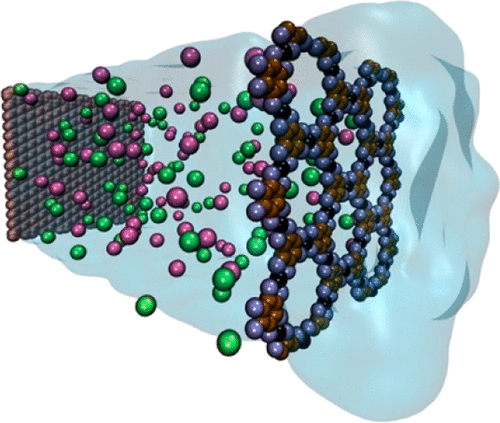Dec 20 2019
The world’s surface is covered by 71% of seawater, but despite this fact, four billion people still face severe water scarcity problems at least one month of the year.
 A conductive metal-organic framework (MOF) is a new type of membrane for water desalination. Image Credit: College of Engineering.
A conductive metal-organic framework (MOF) is a new type of membrane for water desalination. Image Credit: College of Engineering.
Scientists are currently working on a honeycombed-patterned membrane that has a thickness of only a few atoms. This membrane can desalinate water using less energy than current techniques.
A major issue faced across the world is water scarcity.
It affects every continent, four billion people live under conditions of severe water scarcity at least one month of the year. Half a billion people live under severe water scarcity all year.
Amir Barati Farimani, Assistant Professor, Department of Mechanical Engineering, Carnegie Mellon University
Oceans of non-potable water are available right outside the doors of people, even as they struggle without access to safe, drinkable water.
“71% of the world’s surface is covered by seawater,” Barati Farimani added. “So this is a very interesting contradiction.”
To address this problem, Barati Farimani has dedicated his study on water desalination. This is the process where salty seawater can be converted into freshwater.
Several methods are available to desalinate water, but one of the most effective methods is membrane desalination. This method involves pushing water via a thin membrane that has very small holes. While this water passes through the pores, the salt ions are left behind, leaving just freshwater on the other side.
In his recent study, Barati Farimani analyzed the potential of a new kind of membrane, known as a metal-organic framework (MOF).
“These membranes consist of both the metal center and organic compound,” added Barati Farimani. The metal and the organic compound join in a pentagonal pattern and leave a hole in the middle that acts as a pore. He further added that “If you look at them, they are like a honeycomb.”
There are a few reasons why the MOF is more effective. Firstly, it is unbelievably thin and has a thickness of just a few atoms. This implies that there is very minimal friction as the water molecules flow via the pores.
Furthermore, the pores’ placement aids with permeation.
When you don’t have adjacent pores, there’s a huge pressure from the wall on the molecules. There’s no pressure from the wall side.
Amir Barati Farimani, Assistant Professor, Department of Mechanical Engineering, Carnegie Mellon University
This renders the desalination process less efficient. To figure out why, one can simply visualize pouring water into a funnel. The water passes more gradually via the hole toward the end since it is pushed against the walls of the funnel and forced through a tiny space.
By contrast, the MOF has numerous neighboring pores.
“There’s no pressure from the wall side. And that gives them this opportunity to pass more easily through the pore,” added Barati Farimani.
This time, one can visualize pouring water through a strainer—it travels even more rapidly because the strainer has numerous exit points through which the water can pass through.
In the end, the MOF has better structural integrity when compared to other materials. In a majority of the materials, researchers have to drill very small tiny holes to produce the required pores. But these holes restrict the amount that can be created for each surface area.
If you want to make a lot of pores, graphene or MoS2 can’t do that. Structurally they can’t hold the pressure.
Amir Barati Farimani, Assistant Professor Department of Mechanical Engineering, Carnegie Mellon University
MOF is intrinsically porous because of its honeycomb structure. This enables a greater ratio of pores to the surface area. It also saves on energy and time because the pores no longer have to be drilled or adjusted in size.
The variations between other usual membranes and MOF are significant, in terms of the number of ions that are rejected and the way water passes through quickly. And that is just looking at a replication of a few pores. Billions of pores can be present in a desalination plant, increasing its efficiency considerably.
“In the scale of a large operation, it would be huge, “Barati Farimani stated. “Even a slight increase in efficiency would mean a huge leap.”
Barati Farimani’s article on his study has been reported in the Nano Letters journal, which is a monthly peer-reviewed scientific journal published by the American Chemical Society. The article adds to the increasing debate relating to the desalination of water and represents a major step forward in the field.
Apart from the world of academics, Barati Farimani believes that his study can make a positive impact in the lives of people.
“We need to provide fresh water for many underprivileged people, like in Africa or other places. Basically that’s our mission—to make it so energy efficient that we have water desalination everywhere,” concluded Barati Farimani.